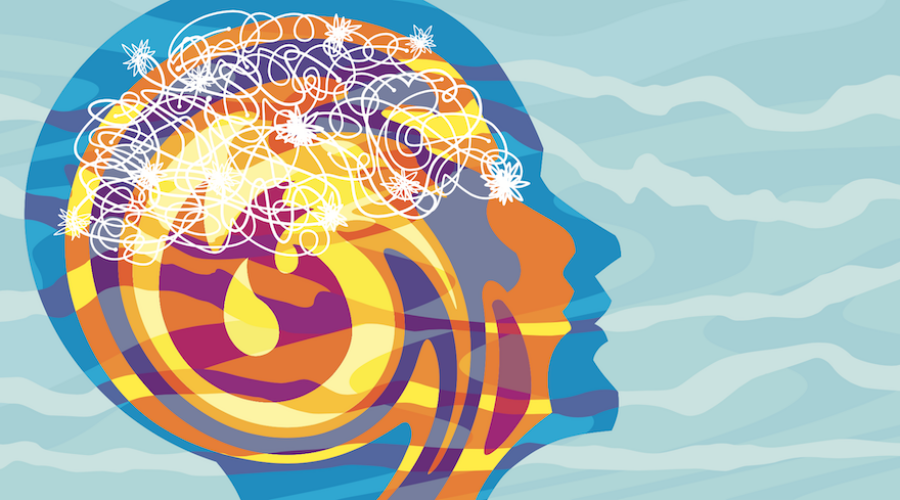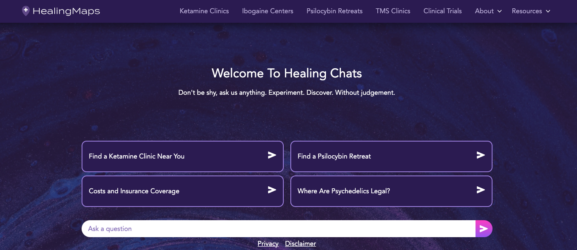Harm Reduction in Psychedelic-assisted Therapies: Minimizing Risks and Maximizing Benefits
The burgeoning field of psychedelic-assisted therapies holds immense potential for treating a range of mental health conditions, including depression, anxiety, addiction, and PTSD. However, alongside this excitement lies the responsibility to ensure responsible and ethical use of these powerful substances. This is where the concept of harm reduction comes into play. With the recent death of Matthew Perry attributed to recreational ketamine use, we want to outline how psychedelics can be consumed in a safe and therapeutic manner.
Ready to explore a new horizon in mental health? Try out the beta version of HealingChat, HealingMaps AI chatbot that takes all our vetted content, clinics and retreats to answer all your questions in a safe environment. Try the beta version now!
What is Harm Reduction in the Context of Psychedelics?
Harm reduction is a philosophy and set of practical strategies aimed at minimizing the potential risks associated with drug use. It focuses on meeting people “where they are at” and empowering them to make informed choices about their use of substances, rather than imposing rigid abstinence-only approaches.
In the context of psychedelics, harm reduction incorporates several key principles:
- Empowering informed choices: Providing accurate information about the potential risks and benefits of using psychedelics, including setting, dosage, preparation, and integration.
- Minimizing risks: Implementing protocols to reduce physical and psychological risks, such as controlled dosages, supervised sessions, and integration therapy.
- Respecting individual autonomy: Recognizing that individuals have the right to make their own choices about their bodies and experiences. Even if those choices differ from societal norms.
- Focusing on well-being: Emphasizing the importance of overall well-being and the potential for psychedelics to contribute to personal growth and healing.
RELATED: Ketamine clinicians weigh in on the safety of ketamine therapy
How Harm Reduction Informs Psychedelic-assisted Therapies:
- Preparation and Screening: Prior to undergoing psychedelic-assisted therapy, individuals undergo comprehensive screening to assess suitability and identify potential risks. This includes a thorough discussion of medical history, mental health status, and any previous experiences with psychedelics.
- Set and Setting: Therapists create a safe and supportive environment for psychedelic sessions. This ensures a positive and controlled setting that minimizes external distractions.
- Dosage and Administration: Precisely controlled dosages of psychedelics are administered by trained professionals, minimizing the risk of adverse reactions.
- Therapeutic Support: Individuals participate in therapy sessions before, during, and after their psychedelic experience. This guides the process, address any challenges, and support integration of insights gained.
- Crisis Intervention: Protocols are in place to address potential psychological or physical emergencies that may arise during or after the psychedelic experience.
- Integration and Aftercare: Therapists provide ongoing support and guidance to individuals as they integrate their psychedelic experiences into their lives and make meaningful changes.
Harm Reduction Beyond Psychedelic-assisted Therapies:
The principles of harm reduction extend beyond the clinical setting and are relevant to anyone considering using psychedelics in any context. This includes:
- Self-education: Conducting thorough research to understand the potential risks and benefits of different psychedelic substances.
- Setting intentions: Clarifying personal goals and intentions for engaging with psychedelics to maximize potential benefits and minimize risks.
- Finding a safe and supportive environment: Choosing a safe and comfortable setting where one feels secure and supported during the experience.
- Dosage and sourcing: Using carefully measured dosages and obtaining psychedelics from reliable sources to ensure safety and quality.
- Integration practices: Engaging in practices like meditation, journaling, and creative expression to help process and integrate insights gained from the experience.
Harm Reduction Resources:
Several organizations provide valuable resources and support for harm reduction in the context of psychedelics:
- The Heffter Research Institute: https://www.heffter.org/
- Fireside Project: https://firesideproject.org/
- Psychedelic Harm Reduction Organization: https://www.frontiersin.org/articles/10.3389/fpsyg.2021.645246
- TripSit: https://www.trips.uk.com/
Harm reduction is a vital component of responsible and ethical psychedelic use. By embracing these principles, individuals can maximize the potential benefits of these powerful substances while minimizing risks and promoting overall well-being. By working together, researchers, therapists, harm reduction organizations, and individuals can create a safe and supportive environment for exploring the transformative potential of psychedelics.



